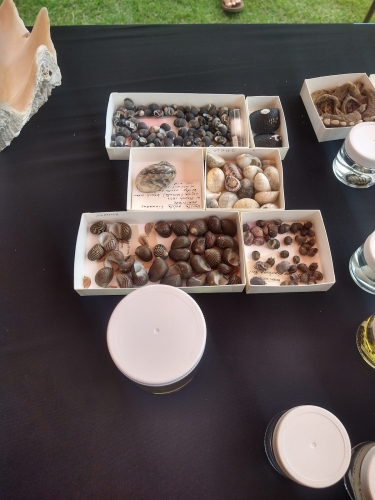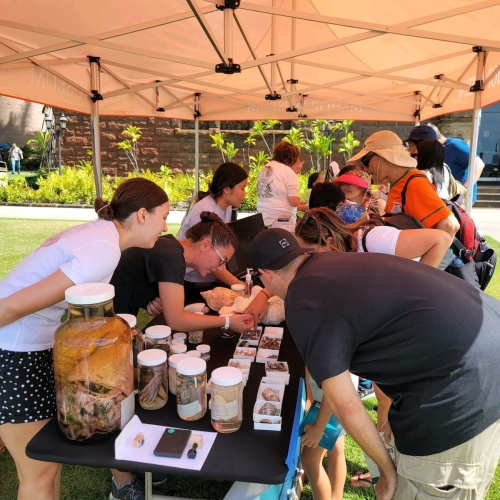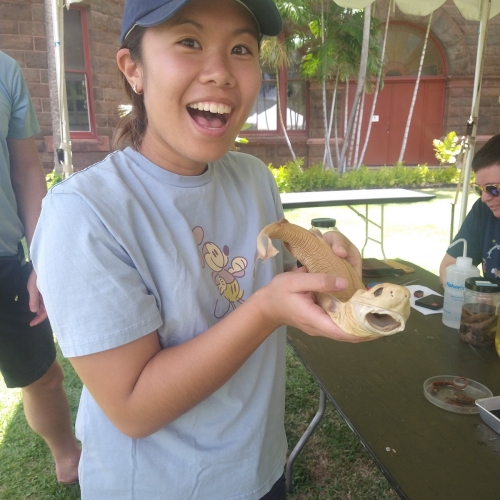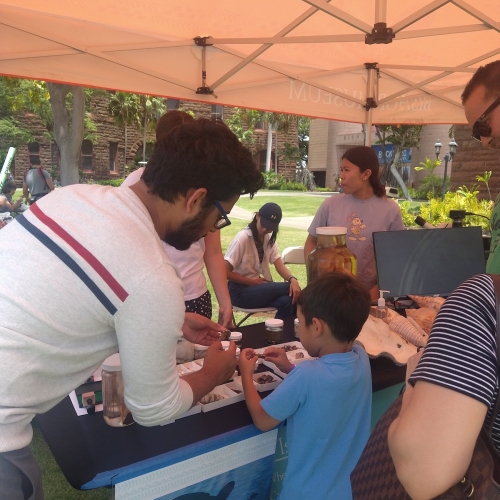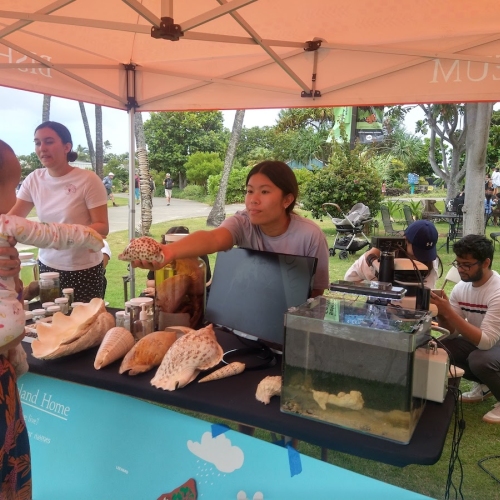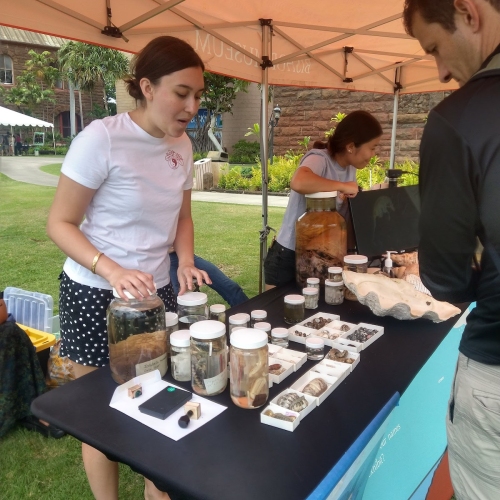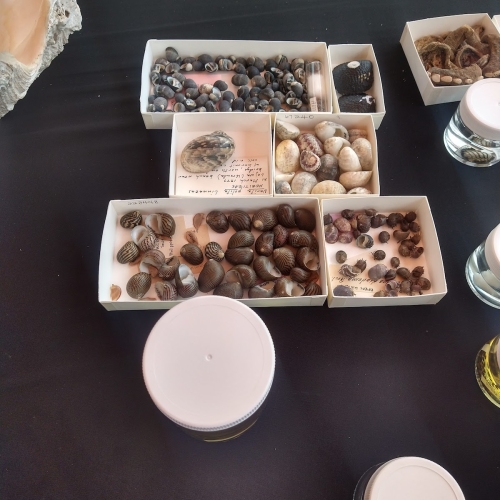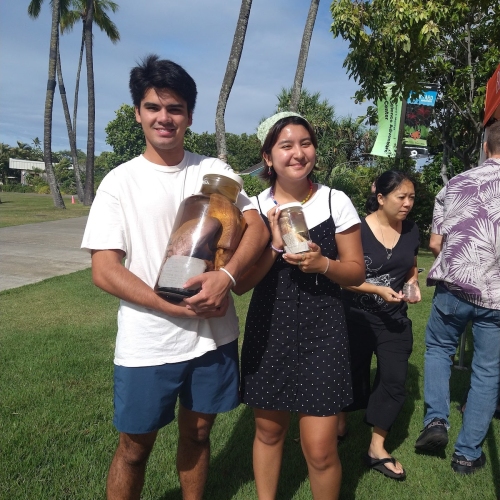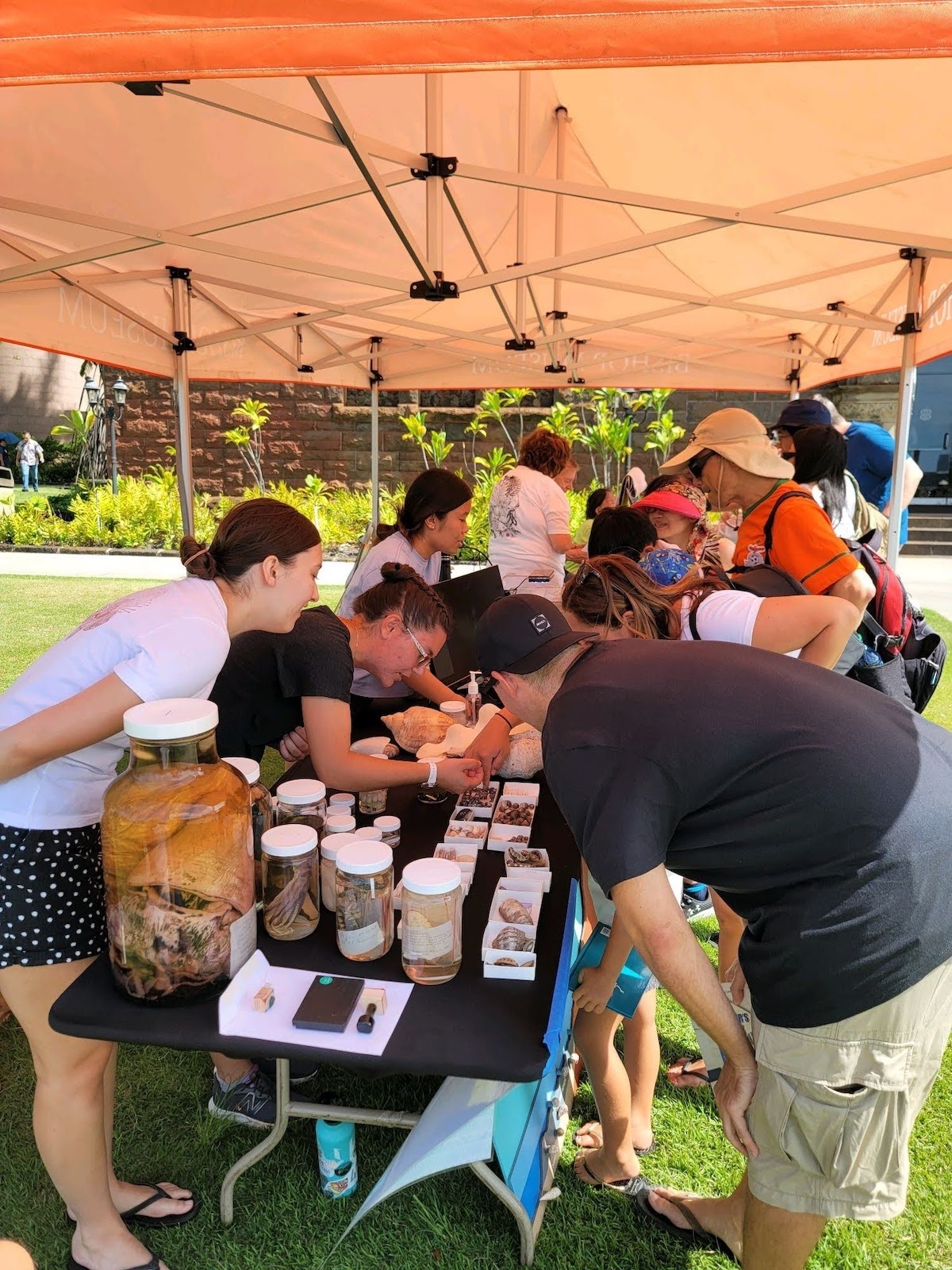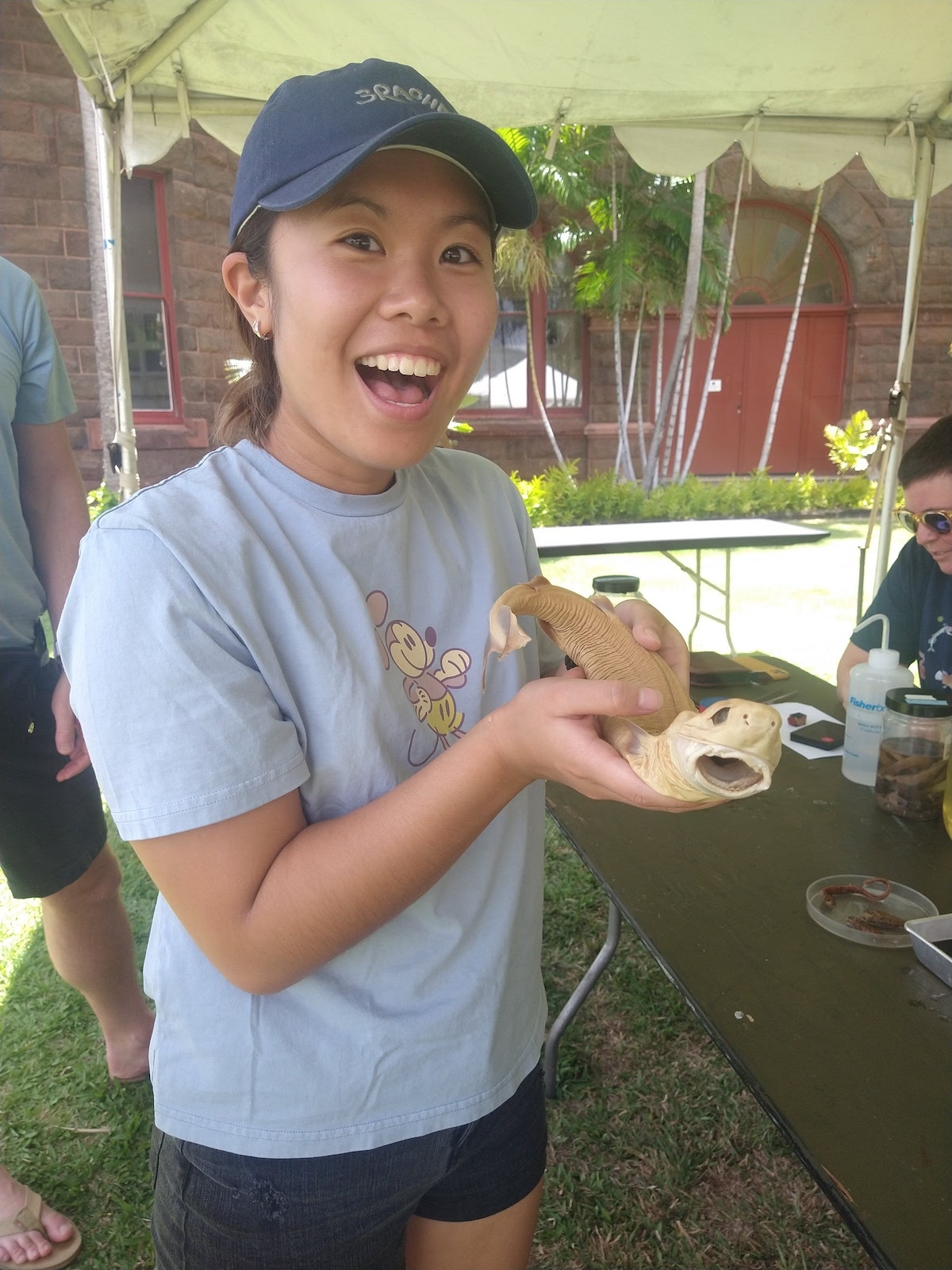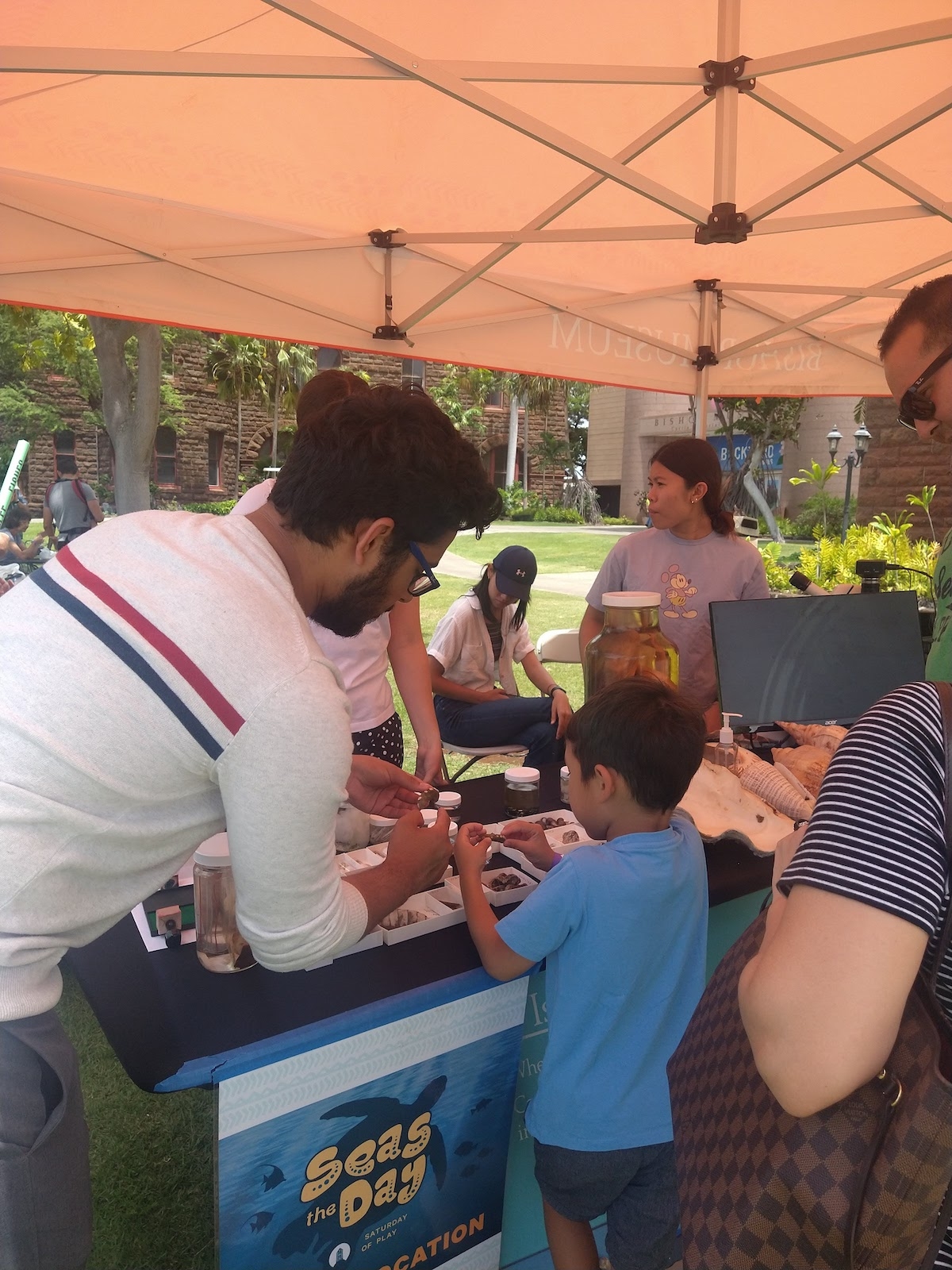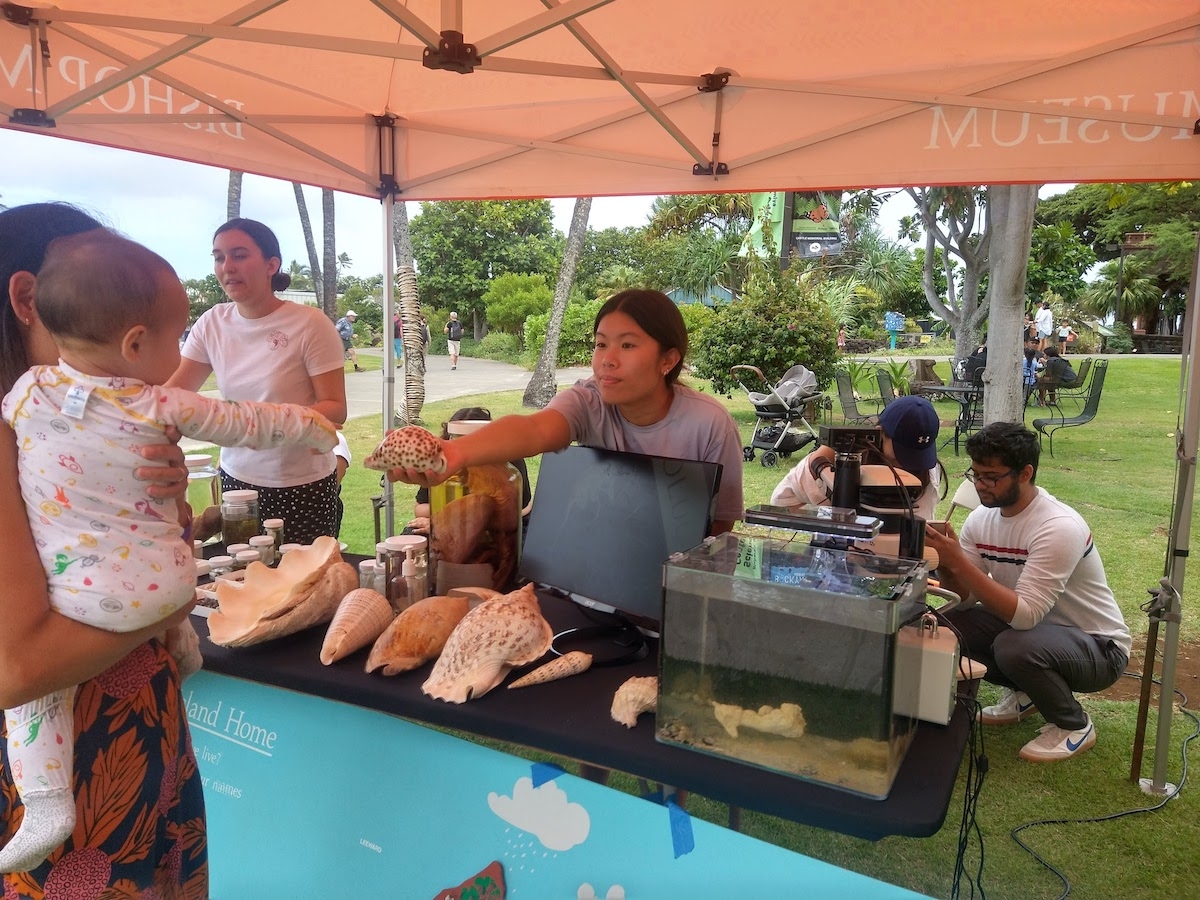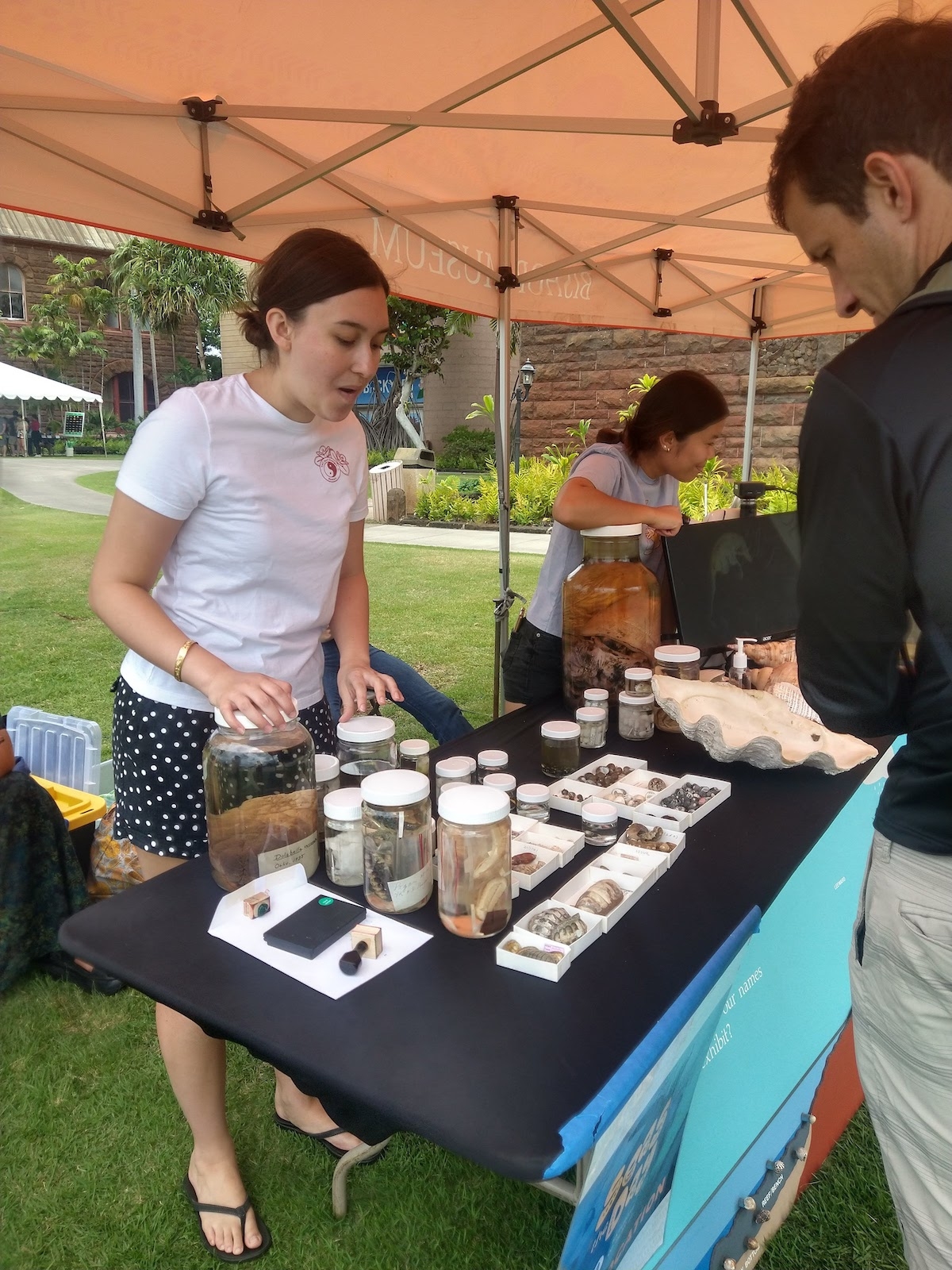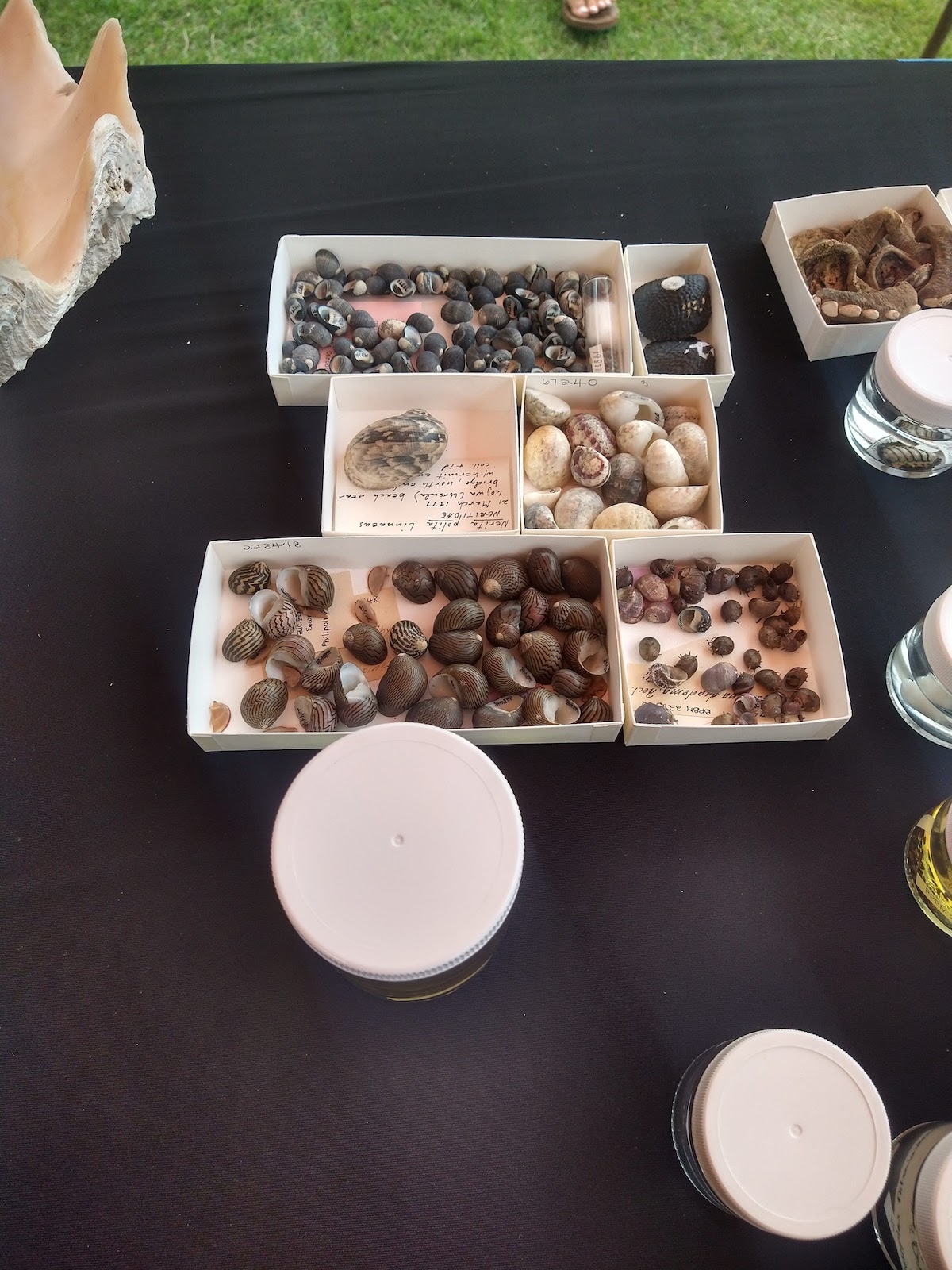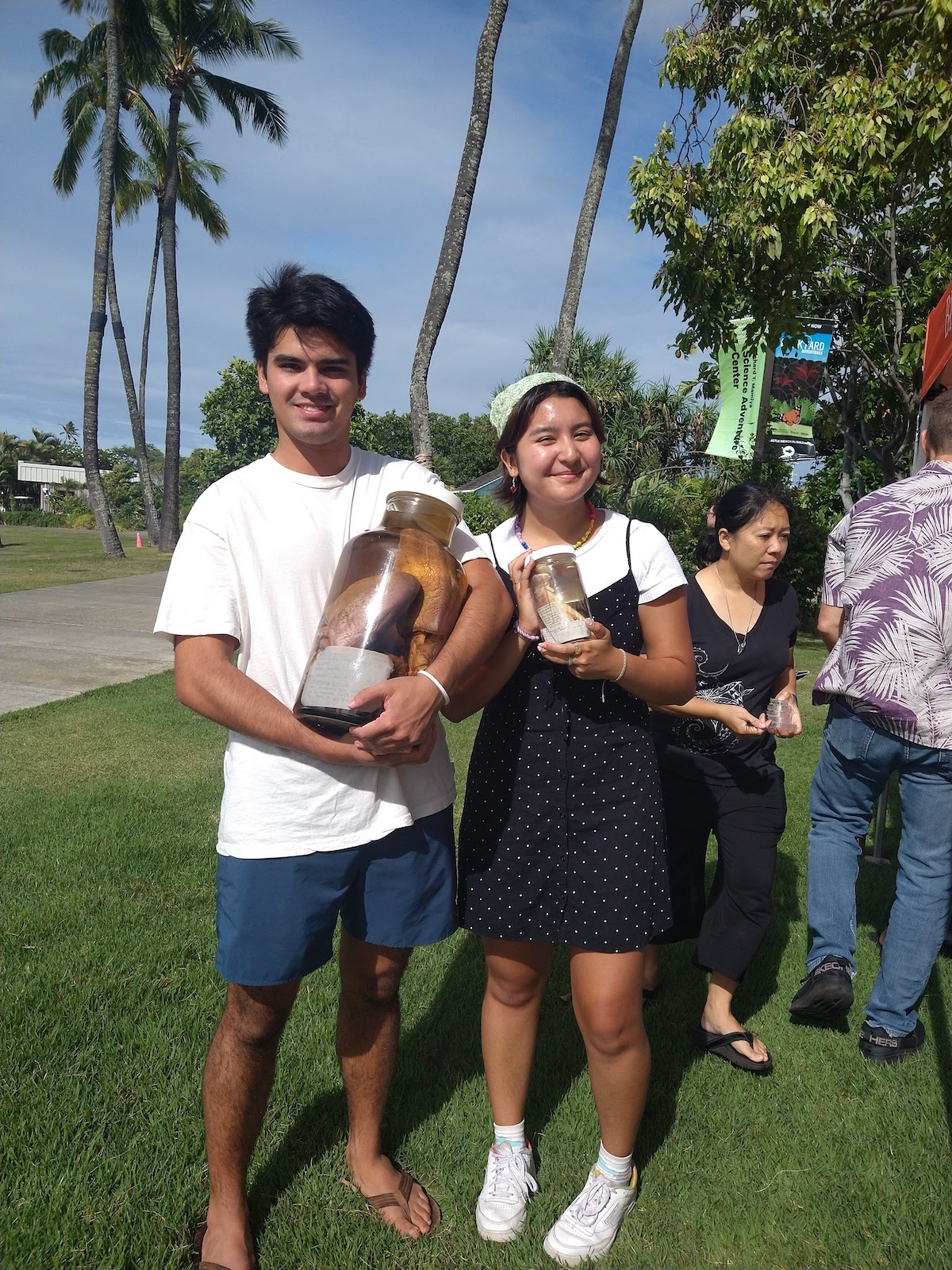We worked at one of two booths for malacology, introducing people to the cool marine molluscs found here and around the Pacific. We also had the chance to check out the other booths at the event, which included the ichthyology department, Sea Grant Hawaiʻi, Hawaiʻi Marine Animal Response, UH Mānoa Oceanography, and Parley for the Oceans.
Earlier in the week, the students currently working at the Bishop Museum selected specimens and lots to be pulled, focusing on those that were related to our research species and that would be the most interesting for the public to see. When we got to the museum on Saturday morning, our first task was to pull these lots out. We displayed both dry specimens (for snails, this means just the shell) and wet specimens (which are kept in jars of ethanol to preserve tissue along with the shell), as well as having a microscope and small saltwater tank set up.
Throughout the day, we were able to engage with a wide audience and share cool information about our study species and marine molluscs in general. As the day went on, we perfected our talking points and learned how to adapt them for different ages. Some of us primarily talked about our study species, while others showed off some of the giant shells from the collection or supported the booth in other ways. Kids and adults alike were able to engage in our table by touching the shells, seeing arthropods through the microscope, hearing about our work, and considering science questions like why some shells have spikes, or how to know if something is the same or a different species. Overall, it was a fun and rewarding experience.
Seas the Day @ Bernice Pauahi Bishop Museum
This weekend, our REU group participated in science outreach as part of the Bernice Pauahi Bishop Museumʻs “Seas the Day” event.
Questions? Email us at uhmreu@hawaii.edu
